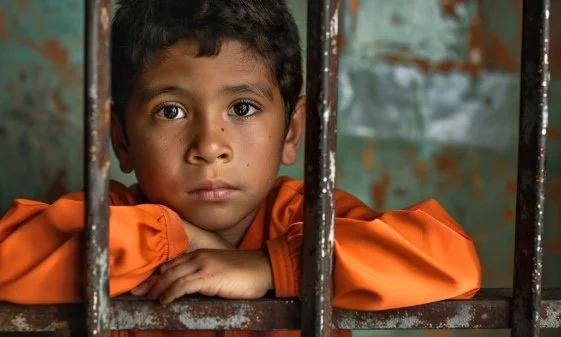India’s Juvenile Justice System Has Failed Children, Says New Nationwide Study
Only 11 of 292 Districts Meet Minimum Standards Under 2015 Juvenile Law
November 24, 2025
A decade after the Juvenile Justice (Care and Protection of Children) Act, 2015 came into force, a new study shows that its pledges of timely, protective and rehabilitative justice for children have failed in practice. The breakdown has left thousands of children stuck in drawn-out legal processes, exposed to continued harm.
Of 1,00,904 cases recorded before Juvenile Justice Boards (JJBs) between November 2022 and October 2023, only 45,097 were resolved, according to the study by the India Justice Report, titled “Juvenile Justice and Children in Conflict with the Law: A Study of Capacity at the Frontlines,” as cited by The Times of India. That means more than 55 percent of cases remained pending.
In Odisha, the pendency rate reached 83 percent, making it among the worst-performing states, says the report, which reviewed the functioning of 470 JJBs across 20 states and Union Territories and combined data from state governments, responses to parliamentary questions and a year-long RTI investigation.
Karnataka reported a relatively lower figure of 35 percent.
But the national picture remains bleak. On average, one in every two cases is carried forward into the following year.
The law mandates that each Juvenile Justice Board include a principal magistrate and two social worker members to ensure both legal and psychosocial balance in decisions. Yet 24 percent of boards, 111 out of the 470 studied, were operating without a full bench. This results in slower hearings, fewer opportunities for holistic and rehabilitative decisions, and in many cases, children being held in institutional custody for extended periods, sometimes beyond the legal limit.
The most shocking finding, however, lies deeper in the institutional design.
Out of 292 districts that submitted usable data, only 11 meet the basic minimum conditions required to handle cases in accordance with the Act. These parameters include the existence of a JJB, a Special Juvenile Police Unit, a child welfare institution, legal aid services, probation officers, adequate staff and manageable pendency.
Eight of these 11 districts are located in Mizoram.
In every other part of the country, these basic components are either missing or non-functional. It means that for most children in conflict with the law, the minimum structure required to guarantee fair treatment does not exist.
Equally troubling is the condition of facilities meant for children accused of serious offences.
Under the Act, states are required to set up dedicated “Places of Safety” for 16–18-year-olds accused of heinous crimes. Fourteen states, including Maharashtra, Gujarat, Madhya Pradesh, West Bengal, Punjab, Andhra Pradesh and Telangana, have not set up even one such facility. The result is that older juveniles may be held in ordinary observation homes or in adult-like settings, a clear violation of the principles the Act was meant to uphold.
Girls are even worse off.
Nationwide, there are only 40 residential institutions that can accommodate girls in conflict with the law, including mixed facilities. The shortage of gender-appropriate infrastructure forces courts and authorities to transfer girls to distant locations, often across districts or even states. This severely disrupts contact with families and legal representatives. It also exposes children to environments where they are mixed with others of varying ages and offence profiles, precisely the situation the 2015 law was designed to prevent.
The 2015 Act is structurally important, yet the justice system continues to operate without consistent, publicly available, time-series data. Most states are unable to provide year-on-year information on pendency, infrastructure or outcomes. This makes it nearly impossible to track progress or identify chronic failures, and it raises questions about whether the system has been allowed to deteriorate due to this opacity.
In a system built for rehabilitation rather than punishment, the delay of justice directly harms the developmental and psychological well-being of children.
You have just read a News Briefing by Newsreel Asia, written to cut through the noise and present a single story for the day that matters to you. Certain briefings, based on media reports, seek to keep readers informed about events across India, others offer a perspective rooted in humanitarian concerns and some provide our own exclusive reporting. We encourage you to read the News Briefing each day. Our objective is to help you become not just an informed citizen, but an engaged and responsible one.

